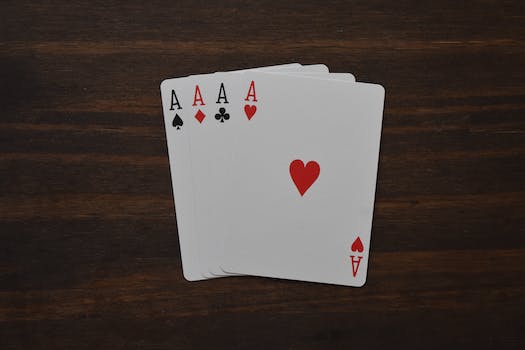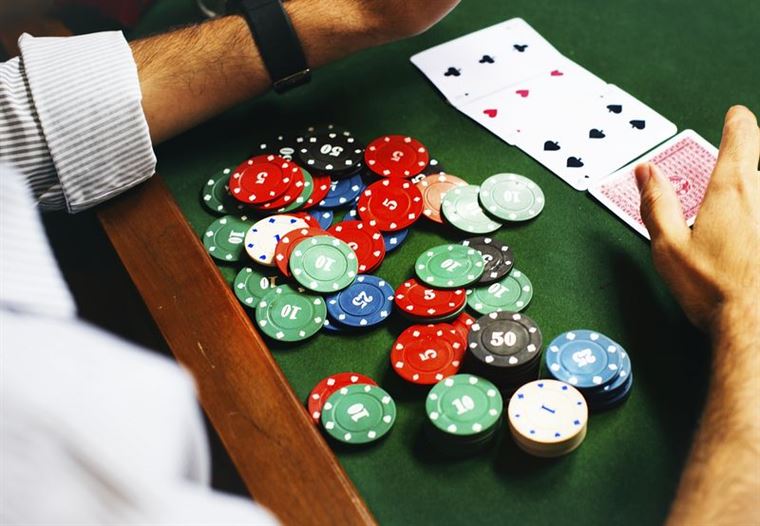Poker is a game that has captivated players around the world for centuries. While Texas Hold’em and Omaha are undoubtedly the most popular variations, there is a whole world of lesser-known poker games waiting to be explored. From Razz to Badugi, these less common poker games offer unique challenges and intricacies that can test even the most seasoned players. In this article, we will delve into the fascinating world of these lesser-known poker games, uncovering their rules, strategies, and the thrill they bring to the table. Whether you’re a poker enthusiast looking to expand your horizons or a curious beginner seeking new adventures, join us as we unravel the intricacies of Razz, Badugi, and other captivating poker variants.
The Basics of Razz: A Guide to this Lesser-Known Poker Game
Razz is a form of stud poker, where players are dealt seven cards each, with the objective being to make the lowest possible hand. Unlike traditional poker games, where the highest hand wins, in Razz, the lowest hand wins the pot. This adds a whole new level of strategy and excitement to the game.
The rules of Razz are fairly simple. Each player is dealt two hole cards and one face-up card, also known as the door card. The player with the highest door card is required to make a forced bet, known as the bring-in. The betting then continues clockwise around the table, with players having the option to fold, call, or raise.
After the first round of betting, each player is dealt another face-up card, known as fourth street. The player with the lowest exposed hand at this point is required to start the betting. This process continues until each player has four face-up cards.
Once all the face-up cards have been dealt, each player receives a final hole card, also known as the river card. A final round of betting takes place, with the player with the lowest exposed hand starting the betting. If there are two or more players with the same lowest hand, the player closest to the left of the dealer starts the betting.
After the final round of betting, a showdown occurs, where the remaining players reveal their hands. The player with the lowest five-card hand wins the pot. It’s important to note that in Razz, straights and flushes do not count against a player’s hand. The best possible hand in Razz is A-2-3-4-5, also known as the wheel.
Razz is a game that requires a different set of skills compared to traditional poker games. Since the objective is to make the lowest hand, players need to be able to read their opponents’ hands and make strategic decisions based on the exposed cards. Bluffing is also an important aspect of Razz, as players can try to deceive their opponents into thinking they have a stronger hand than they actually do.
Mastering Badugi: Strategies and Tips for Success in this Unique Poker Variation
Badugi is a draw poker game that is played with four cards instead of the traditional five. The objective of the game is to make the lowest possible hand with four different suits and no pairs. The best possible hand in Badugi is A-2-3-4 of different suits, also known as a Badugi. Unlike other poker games, the ranking of hands in Badugi is determined by the number of cards and suits, rather than the traditional high card or pair rankings.
One of the key strategies in Badugi is to focus on drawing and discarding cards strategically. Since the goal is to make a Badugi hand, players should aim to discard cards that do not contribute to this objective. For example, if a player has two cards of the same suit, it is advisable to discard one of them to increase the chances of making a Badugi. Similarly, if a player has a pair, it is crucial to discard one of the cards to avoid disqualification from making a Badugi hand.
Another important aspect of Badugi strategy is to pay attention to the cards that opponents are discarding. By observing the cards that are being discarded, players can gain valuable information about the strength of their opponents’ hands. If an opponent is discarding multiple cards of the same suit, it indicates that they are likely trying to make a Badugi hand. On the other hand, if an opponent is discarding cards of different suits, it suggests that they may be struggling to make a Badugi and could potentially have a weaker hand.
Bluffing is also a crucial element in Badugi, as it is in any poker game. Since the objective is to make the lowest possible hand, players can use bluffing to deceive their opponents into thinking that they have a stronger hand than they actually do. By betting aggressively and confidently, players can force their opponents to fold and win the pot without having to show their cards. However, bluffing should be used sparingly and strategically, as it can backfire if opponents catch on to the deception.
Exploring the Intricate Rules of Less Common Poker Games: Razz and Badugi
Razz is a lowball poker game that is played with the goal of making the lowest possible hand. Unlike traditional poker games where the highest hand wins, in Razz, the lowest hand wins the pot. This adds a whole new level of strategy and excitement to the game.
The rules of Razz are fairly simple. Each player is dealt seven cards, and the goal is to make the best low hand possible. The best possible hand in Razz is A-2-3-4-5, also known as the “wheel.” Straights and flushes do not count against you in Razz, and aces are always low. This means that the best possible hand is 5-4-3-2-A, followed by 6-4-3-2-A, and so on.
One of the key strategies in Razz is to pay attention to the exposed cards of your opponents. Since you can see some of their cards, you can make educated guesses about what kind of hand they are trying to make. This allows you to make better decisions about whether to fold, call, or raise.
Badugi, on the other hand, is a draw poker game that is played with four-card hands. The goal of Badugi is to make the lowest possible hand with four different suits. This means that flushes and pairs count against you in Badugi, and the best possible hand is A-2-3-4 of four different suits.
The rules of Badugi may seem a bit complicated at first, but they are actually quite straightforward. Each player is dealt four cards face down, and there are three rounds of betting. After each round of betting, players have the option to discard any number of cards and receive new ones. The goal is to make the best possible Badugi hand by the end of the final round of betting.
One of the unique aspects of Badugi is that it is a triple draw game. This means that after each round of betting, players have the opportunity to discard and draw new cards up to three times. This adds an extra layer of strategy to the game, as players must decide which cards to keep and which to discard in order to make the best possible hand.
From Razz to Badugi: Unraveling the Intricacies of Lesser-Known Poker Games
Razz is a lowball poker game that is played with the goal of making the lowest possible hand. Unlike traditional poker games where the highest hand wins, in Razz, the lowest hand wins the pot. The game is played with a standard 52-card deck and can be played with anywhere from two to eight players.
The rules of Razz are similar to those of Seven Card Stud, with each player being dealt seven cards throughout the course of the hand. The key difference is that in Razz, straights and flushes do not count against the player’s hand. This means that the best possible hand in Razz is A-2-3-4-5, also known as the “wheel.”
One of the most important strategies in Razz is starting with a strong low hand. Since the goal is to make the lowest hand possible, starting with a hand that contains low cards is crucial. Additionally, paying attention to the exposed cards of your opponents can give you valuable information about the strength of their hands and help you make better decisions.
Badugi, on the other hand, is a draw poker game that originated in Asia. It is played with a standard 52-card deck and can be played with two to eight players. The objective of Badugi is to make the lowest four-card hand with one card of each suit.
In Badugi, players are dealt four cards face down, and there are three rounds of betting. After each round of betting, players have the option to discard any number of cards and receive new ones in exchange. The goal is to make the best possible hand with one card of each suit and no pairs.
One of the unique aspects of Badugi is that the ranking of hands is different from traditional poker games. In Badugi, the best possible hand is A-2-3-4 of different suits, also known as a “Badugi.” If no player has a Badugi, the player with the lowest three-card hand wins the pot.
Like any poker game, strategy is key in Badugi. Knowing when to discard and when to hold onto certain cards can greatly impact your chances of winning. Additionally, paying attention to the cards that your opponents discard can give you valuable information about the strength of their hands.
Lesser-Known Poker Games: Razz and Badugi Demystified
Razz is a lowball poker game that is played with seven cards. The objective of the game is to make the lowest possible hand. Unlike traditional poker games where the highest hand wins, in Razz, the lowest hand wins the pot. This adds an interesting element of strategy to the game, as players must carefully consider which cards to keep and which to discard.
In Razz, the best possible hand is A-2-3-4-5, also known as the “wheel.” This hand is considered the nuts, meaning it cannot be beaten. The worst possible hand is a pair of sevens, which is the highest hand in Razz. The ranking of hands in Razz is the opposite of traditional poker games, with straights and flushes not counting against the player’s hand.
One of the key strategies in Razz is to pay close attention to the exposed cards of your opponents. Since Razz is a stud poker game, some of the cards are dealt face up, allowing players to see what their opponents are holding. This information can be used to make informed decisions about which cards to keep and which to discard.
Badugi, on the other hand, is a draw poker game that is played with four cards. The objective of the game is to make the lowest possible hand with four different suits. This means that flushes and pairs are not desirable in Badugi, as they decrease the value of the hand.
In Badugi, the best possible hand is A-2-3-4, with each card being a different suit. This hand is known as a “Badugi” and is considered the nuts. The worst possible hand is four cards of the same suit, which is known as a “four-card flush.” The ranking of hands in Badugi is based on the number of cards and the suits, with the lowest hand being the best.
One of the unique aspects of Badugi is the drawing round. After the initial deal, players have the option to discard any number of cards and receive new ones in return. This adds an element of strategy to the game, as players must decide which cards to keep and which to discard in order to improve their hand.
Both Razz and Badugi offer a refreshing change from the more common poker games. They require a different set of skills and strategies, making them a favorite among experienced players looking for a new challenge. Whether you prefer the lowball nature of Razz or the draw element of Badugi, these lesser-known poker games are sure to provide hours of entertainment.
In conclusion, Razz and Badugi are two lesser-known poker games that offer a unique and exciting twist on the traditional game. With their own set of rules and strategies, these games provide a refreshing change for experienced players. So, the next time you’re looking to mix things up at the poker table, give Razz or Badugi a try and see if you can unravel the intricacies of these lesser-known poker games.

















